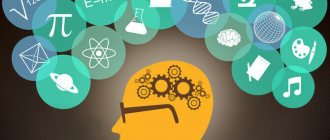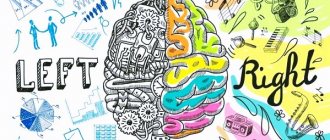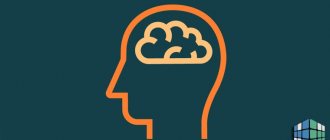Money paradox
Richard and Paul have the same amount of money.
How much should Richard give to Paul so that he has $10 more than he does? Answer: 5 dollars. Many people answer $10 and make a mistake. Let's say each friend has $50. If Richard gives Paul $10, then Paul will have $60 and Richard only has $40. Therefore, Paul will have $20 more than Richard, not $10.
Show answer
Hide answer
Logic puzzles
13. How to measure 4 liters of water if there are 5-liter and 3-liter containers?
14. How to make the number “4” without breaking a single stick.
15. Which kettle contains more tea?
Wine price
A bottle of wine costs $10. Wine is $9 more than a bottle. How much does an empty bottle cost?
Answer: 0.5 dollar or 50 cents. Many people answer 1 dollar, but this is incorrect. If the bottle really cost that much, then its contents should be $9 more expensive - $10. This means that wine and a bottle would cost $11. And if a bottle costs 0.5 dollars, wine costs 9.5, then everything together is exactly 10 dollars.
Show answer
Hide answer
Secrets of intelligence development
Before you start developing your intellect, you need to learn one rule: classes must be comprehensive and regular. An example is sports. To improve your health, you need to give up bad habits and add physical activity, for example, by purchasing a gym or swimming pool membership. The same thing happens with the development of emotional intelligence and mental abilities. You shouldn’t think that rare reading or problem solving is enough for development. We need complex actions, implying the presence of theory and practice.
Many people understand the importance of developing mental abilities. However, they do nothing in this direction. This is due to laziness, unwillingness to change habits and leave the comfort zone. In addition, most people want to find easy ways to solve problems, and not strain themselves by working on themselves. It is this feature of human nature that prompts people to buy advertised weight loss products or exercise equipment.
Achieving a goal requires effort, discipline, and willpower. Only with the help of these qualities can you force yourself to regularly devote time to developing your mind.
Enterprising Trader
The merchant bought the product for 7 dollars, sold it for 8, then bought it again for 9 and sold it again for 10. How much profit did he make?
Answer: 2 dollars. Let's say that a trader has $100, and during the day he will make only four of the transactions described.
First, he will pay 7 dollars for his purchase, then he will have 93 left. When he sells his purchase for 8, he will already have 101 dollars.
Then he will buy the same item again for $9, that is, he will again spend $9 on the purchase, leaving him with $92. Finally, he will sell the item for 10, and therefore he will have 102 dollars.
Show answer
Hide answer
You can develop your intelligence: 5 ways to maximize your cognitive abilities
Don't pursue goals that are easy to achieve. It is worth aiming at what you can do with difficulty, after making considerable effort - Albert Einstein
Even though Einstein was not a neuroscientist, he certainly knew everything when he spoke about the human ability to achieve anything.
He intuited something that we have only now been able to confirm with data: namely, what makes cognitive abilities perform at their highest level. Essentially: What doesn't kill you makes you smarter. Just recently, my teacher told me that people are bad at controlling their intellect. It was genetically assigned at birth. He explained that efforts made to develop intelligence in children (for example, through programs such as Head Start) met with little success once they were put into practice, and furthermore, once the “training” ended, they immediately returned to initial low level of cognitive abilities. Indeed, the data supported this, and he (along with many other intelligence researchers) concluded that intelligence could not be improved, or at least the changes would not be lasting. However, I objected. You see, before I began this phase of my research, I began working as a Behavioral Therapy Specialist, teaching young children with autism. These children had a range of cognitive impairments - my job was to educate them in areas that were underdeveloped to bring them as close as possible to the level of functioning of their peers. To achieve the goal, during the treatment process we used many methods, or Multimodal Training (when the maximum number of information input methods is used). One of my first clients was a little boy with PDD-NOS (Pervasive Developmental Delay), a mild form of autism. When we started treatment, we tested his IQ and it was around 80, which is practically considered mentally retarded. After I worked with him for about three years - individually, teaching him in areas such as communication, reading, math, social behavior, play skills, entertainment and recreation - using multimodal techniques - he was retested. His IQ was now well over 100 (given that 100 is considered "average" compared to the average person). That's a 20-point increase, more than a one-level improvement for a child with autism!
This was not the only child who, before my eyes, progressed significantly during my medical practice. I have been very fortunate to see so many children develop rapidly - not by miracle, and even without taking medication, there is also data confirming their success. I thought - if these children with severe learning difficulties were able to progress so much and make such gains in every aspect of cognitive functioning - why couldn't the average person make the same progress? Or even achieve great success, given that he does not have the additional problems of autism?
Although the data from early studies did not give very accurate results, I did not give up. I still believed that there was a chance to significantly increase cognitive functioning by providing appropriate training - as I had seen this with my own eyes when I worked as a doctor.
Then in 2008, a stunning study was done, “Increasing Fluid Intelligence with Short-Term Memory Training” by Jaeggi, Bushkul, Jonides and Perrig. This study was somewhat of a breakthrough for those researching this topic. They were the first to show that it was actually possible to develop intelligence to a fairly high level through training. What did they do differently?
The people in Jaggie's study were trained using an intensive, multimodal (visual and auditory input) short-term memory task (n-back task) over time periods of varying lengths, over one or two weeks, depending on the group. After this training, they were tested to determine how much they had improved. Most likely, one could assume that after training their level increased. But they went even further. They wanted to see if progress could be transferred to a completely different test of cognitive ability, which would become an indicator of an increase in absolute cognitive ability. What did they find?
After training short-term memory using the n-back test, people were actually able to transfer significant increases in levels to a cognitive aspect that was completely irrelevant to others. It was a huge event.
Below is a graph of their results; you can read more about the entire study here.
What is "Intelligence"?
First of all, let me explain what I mean when I say the word intelligence.
To be clear, I'm not just talking about increasing the amount of facts or bits of knowledge you can accumulate, or what is called crystallized intelligence - this is not fluency or memorization training - in fact, it's almost the opposite. I'm talking about improving your fluid intelligence, or your ability to remember new information, retain it, then use that new knowledge as the basis for solving the next problem or learning another new skill, and so on. Now, while short-term memory is not synonymous with intelligence, it is very related to intelligence. To successfully make intellectual inferences, it is quite important to have a good short-term memory. So, to make the most of your intelligence, it's worth significantly improving your short-term memory - like using the best and most modern parts to help a machine perform at its highest level.
What can you learn from this? This study is significant because it found:
- Hypothetical intelligence can be trained.
- Training and subsequent success are dependent on dosage; the more you train, the more benefits you gain.
- Every person can develop their cognitive abilities, regardless of their starting level.
- Progress can be achieved by practicing on tasks that do not resemble questions on a test.
How can we put this research into practice and benefit from it?
There is a reason why the n-back task has been so successful in increasing cognitive abilities.
This training involves dividing attention between competing stimuli, that is, multimodality (one visual stimulus, one auditory stimulus). This involves focusing on specific details while ignoring irrelevant information, and this helps improve short-term memory over time, gradually increasing the ability to process information effectively in multiple directions. In addition, the stimulus was constantly switched, in such a way that the phenomenon of “practicing test questions” never occurred—there was something new every time. If you've never taken the n-back test, let me tell you about it: it's very difficult. It is not surprising that such an activity has so many benefits for cognitive abilities. But let's think from a practical point of view. Eventually, the cards in the deck or the sounds in the piece will run out (the experiment lasted 2 weeks), so it is not practical to think that if you want to continuously increase your intellectual abilities throughout your life, then one n-back will be enough. Besides, you will get tired of it and stop doing it. I'm sure I would do that. Not to mention the time you'll spend learning this way - we're all very busy all the time! So we need to think about how to model the same types of super-effective multimodal brain stimulation techniques that can be used in normal life and still get the maximum benefit in cognitive growth.
So, taking all this into account, I have developed five basic elements that will help in the development of fluid intelligence, or cognitive ability. As I noted, it is impractical to consistently perform the n-back task or variations of it every day for the rest of your life to reap cognitive benefits. But the practical thing is to make lifestyle changes that will provide the same—and even greater—benefit to cognitive abilities. This can be done every day to reap the benefits of intense whole-brain training, and should also translate into benefits for overall cognitive functioning.
These five basic principles are:
- Look for innovation
- Challenge yourself
- Think creatively
- Don't take the easy way out
- Stay online
Each of these points is a great thing in itself, but if you really want to function at the highest cognitive level possible, it is better to do all five points, and as often as possible. In fact, I live by these five principles. If you accept these as fundamental guiding principles, then I guarantee that you will make the most of your abilities, exceeding even what you thought you were capable of - all without artificial enhancement. Great information: Science backs these principles up with data!
Look for innovation
It is not a coincidence that geniuses like Einstein were knowledgeable in many fields, or polymaths as we call them.
Geniuses are constantly looking for new things to do, exploring new areas. This is their individuality. There is only one "Big Five" trait from the Five Factor Model of Personality (Acronym: ODEPR, or Openness, Conscientiousness, Extroversion, Agreeableness, and Irritability) that is associated with IQ, and that is the trait Openness to Experience. People who have high levels of Openness are constantly looking for new information, new activities, new things to learn—new experiences, in general.
When you are looking for innovation, several things happen. First of all, you create new synaptic connections with every new activity in which you participate. These connections build on each other, increasing the activity of the nervous system, creating more connections so that new connections are created on their basis - thus learning occurs.
An area of interest in recent research is neural plasticity as a factor in individual differences in intelligence. Plasticity refers to the number of connections made between neurons, how this affects subsequent connections, and how long lasting those connections are. This basically means how much new information you are able to take in, and whether you are able to retain it, making permanent changes in the brain. Constantly exposing yourself directly to new things helps put the brain in a prime state for learning.
Novelty also triggers the release of dopamine (I've mentioned this before in other posts), which is not only highly motivating, but also stimulates neurogenesis - the creation of new neurons - and prepares the brain for learning. All you have to do is satisfy your hunger.
Excellent condition for learning = New activity -> dopamine production -> promotes a more motivated state -> which promotes neuronal recruitment and creation -> neurogenesis can occur + increased synaptic plasticity (increased number of new neural connections, or learning).
As a follow-up to Jaeggi's study, researchers in Sweden found that after 14 hours of short-term memory training for 5 weeks, there was an increase in the amount of binding dopamine D1 potential in the prefrontal and parietal regions of the brain. This particular dopamine receptor, type D1, is associated with nerve cell growth and development, among other things. This increase in plasticity, by promoting greater consolidation of this receptor, is very beneficial in order to maximize cognitive functioning.
Follow the point at home: Be “Einstein.” Always look for new mental activities - expand your cognitive horizons. Learn the tool. Take a painting course. Go to a museum. Read about a new field of science. Be dependent on knowledge.
Challenge yourself
There is a huge amount of terrible work written and distributed about how to “train your brain” and “become smarter”.
When I talk about "brain training games", I mean memory and speed games, the purpose of which is to increase the speed of information processing, etc.; This includes games such as Sudoku, which are recommended to be played in “free time” (complete the oxymoron, taking into account the development of cognitive abilities). I'm going to debunk some of the stuff you've previously heard about brain training games. I'll tell you what: They don't work. Personalized learning games don't make you smarter - they make you more proficient at learning brain games. So, they do have a goal, but the results won't last long. To gain anything from these types of cognitive activities, one must appeal to the first principle of seeking innovation. Once you master one of these cognitive activities in the brain training game, you must move on to the next stimulating activity. Do you understand how to play Sudoku? Great! Now move on to the next type of stimulating games. There has been research that supports this logic.
Several years ago, scientist Richard Haier wanted to know whether it was possible to significantly increase cognitive ability through intense training in new types of mental activity over a few weeks. They used the video game Tetris as a novel activity, and used people who had never played the game before as research subjects (I know, I know - can you believe people like that exist?!). They found that after training for several weeks on the Tetris game, study subjects experienced an increase in cortical thickness, as well as an increase in cortical activity, as evidenced by an increase in the amount of glucose used in that area of the brain. Basically, the brain used more energy during that period of training, and became thicker—meaning more nerve connections, or new experiences learned—after such intense training. And they became experts in Tetris. Cool, yeah?
Here's the thing: After an initial dramatic cognitive boost, they noticed a decrease in both cortical thickness and the amount of glucose used during the task. However, they were still good at Tetris; their skill did not deteriorate. Brain scans showed less brain activity during the game, instead of an increase as in previous days. Why the decline? Their brains became more efficient. Once their brain figured out how to play Tetris and really started to get the hang of it, it became too lazy to do anything. He didn't have to work as hard to play the game well, so the cognitive energy and glucose went in a different direction.
Efficiency is not your friend when it comes to cognitive growth. In order for the brain to continue making new connections and keeping them active, you must continue to move on to other stimulating activities once you reach the peak of mastery in a particular activity. You want to be in a constant state of slight difficulty, struggling to achieve something, no matter what it is, as Einstein noted in his saying. This keeps the brain in limbo, so to speak. We will return to this issue later.
Think creatively
When I say that thinking creatively will help you improve your nervous system, I don't mean painting a picture, or doing something fancy, like in the first point, “Seek innovation.”
When I talk about creative thinking, I mean direct creative cognition, and what it means while the process continues in the brain. Contrary to popular belief, creative thinking is not “right-brain thinking.” Both sides of the brain are involved here, not just the right. Creative cognition includes divergent thinking (a wide range of topics/subjects), the ability to make distant associations with ideas, switch between traditional and non-traditional perspectives (cognitive flexibility), and generating original, fresh ideas that are also relevant to the activity in which you are engaged. To do everything correctly, you need the right and left hemispheres to work simultaneously and together.
Several years ago, Dr. Robert Sternberg, former Dean of Tufts University, opened the PACE (Psychology of Ability, Competence and Excellence) Center in Boston. Sternberg tried not only to define the basic concept of intelligence, but also to find ways in which any person can maximize his intelligence through training, and especially through education in schools.
Here Sternberg describes the goals of the PACE Center, which was founded at Yale University: "The core concept of the center is that ability is not fixed, it is flexible, it can be changed, each person can transform his ability into his competence, and his competence into mastery." explains Sternberg. “Our focus is on how we can help people change their abilities so that they can more easily solve problems and cope with the situations they will encounter in life.”
Through his research, Project Rainbow, he developed not only innovative methods of creative teaching in the classroom, but produced assessments that tested students in such a way that they had to approach problems creatively and practically, as well as analytically, rather than simply memorizing facts .
Sternberg explains: “At Project Rainbow we assessed creative, practical, as well as analytical skills. A creative test could be, for example, like this: 'Here is a cartoon. Give it a title.' A practical assignment could be a film about a student who goes to a party, looks around, doesn't know anyone, and obviously feels awkward. What should a student do?
He wanted to see if teaching students to think creatively about assignments could make them learn more about a topic, enjoy learning more, and transfer what they learned to other areas of scientific endeavor. He wanted to see if, by changing teaching and assessment methods, he could prevent “teaching to pass” and get students to learn more in general. He collected information on this topic and still got good results.
Briefly? On average, students in the test group (those taught using creative methods) received higher final college course scores than the control group (those taught using traditional methods and assessment systems). But to make things fair, he gave the test group the same analytical test as the regular students (multiple choice test) and they also scored higher on that test. This means they were able to transfer the knowledge they learned using creative, multimodal learning methods and score higher on a completely different cognitive test on the same material. Does this remind you of anything?
Don't take the easy way out
I mentioned earlier that efficiency is not your friend if you are trying to increase your intelligence level.
Unfortunately, many things in life are designed to increase efficiency. Thus, we do more with less time, physical and mental effort. However, this does not have a beneficial effect on your brain. Consider one modern convenience, GPS. GPS is an amazing invention. I am one of those people for whom GPS was invented. I'm terribly bad at navigating the terrain. I get lost all the time. Therefore, I thanked fate for the advent of GPS. But you know what? After using the GPS for a short time, I found that my sense of orientation became even worse. When I didn't have it at hand, I felt even more lost than before. So when I moved to Boston—the city where the Lost Horror movies originate—I stopped using GPS.
I won’t lie – my suffering knew no bounds. My new job meant traveling all over the outskirts of Boston, and I was lost every day for at least 4 weeks. I was so often lost and wandering for who knows how long that I thought I would lose my job due to chronic tardiness (I was even complained about in writing). But over time, I began to find the right path thanks to the vast navigational experience that I acquired with only my brain and a map. I really began to sense where and what was in Boston thanks solely to logic and memory, and not GPS. I still remember how proud I was that I found the hotel in the city center where my friend was staying, based only on the name and description of the area - even without an address! I felt like I had graduated from a school of navigational education.
Technology makes our lives easier, faster, more efficient in many ways, but sometimes our cognitive abilities can suffer as a result of these kinds of simplifications and harm us in the future. Before everyone starts screaming and emailing my transhumanist friends about how I'm sinning against technology, I should warn you that that's not what I'm doing.
Look at it this way: when you go to work by car, it takes less physical effort, time, and is a more convenient and enjoyable way than walking. Everything seems to be fine. But if you only drive or spend your whole life on a Segway, even not for short distances, then you will not waste energy. Over time, your muscles will atrophy, your fitness will weaken, and you will likely gain extra weight. As a result, your general condition will worsen.
Your brain needs exercise too. If you stop using your problem-solving skills, your logical, cognitive abilities, then how will your brain always be in better shape, let alone improve your mental abilities? Consider that if you constantly rely only on useful modern conveniences, your skills in a particular area may suffer. For example, translator programs: wonderful, but my knowledge of languages noticeably deteriorated as soon as I started using them. Now I force myself to think about a translation before I know the right one. The same applies to spell checking and automatic correction. In truth, automatic correction is the worst thing ever invented to improve your thinking process. You know that the computer will find and correct your mistakes, so you continue typing without even thinking about it. How to spell this or that word correctly. As a result, after a few years of stable autocorrect and automatic spell checking, are we the world's most illiterate nation? (I wish someone would do some research on this.)
There are times when the use of technology is justified and necessary. But there are times when it's better to say no to shortcuts and use your brain while you have the luxury of time and energy. To keep yourself in good physical shape, it is recommended to walk to work as often as possible or take the stairs instead of the elevator several times a week. Don't you want to keep your brain fit too? Put your GPS aside every now and then and do your navigation and problem-solving skills a favor. Keep it handy, but try to find everything yourself first. Your brain will thank you for this.
Stay online
And now we come to the last element on the path to increasing your cognitive potential: a computer network.
What's great about this last setup is that if you're doing the previous four things, you're probably already doing this one. If not, then start. Immediately. By interacting with other people, either through social networks such as Facebook or Twitter, or face-to-face, you expose yourself to situations that will make it much easier for you to achieve goals 1-4. By encountering new people, ideas, and new environments, you open yourself up to new opportunities for mental growth. Being around people who may not be in your field can help you see problems from a new perspective or discover new solutions you've never thought of before. Connecting with other people online is a great way to learn how to open yourself up to new things and absorb unique and meaningful information. I won't even get into the social benefits and emotional well-being that a computer network brings, but it's just an added benefit.
Steven Johnson, who wrote How Good Ideas Are Made, discusses the importance of groups and networks in promoting ideas. If you are looking for new situations, ideas, environments and perspectives, then the network is the answer for you. It would be quite difficult to implement the smarter concept without making the network a core component. The great thing about computer networks: It benefits everyone involved. Collective intelligence for victory!
I have one more thing to mention... Remember at the beginning of this article I told the story about my clients with autism spectrum disorder? Let's think for a moment about how to increase the level of flexibility in your intelligence in light of everything we've already talked about. What can these kids achieve at such a high level? This is not a coincidence or a miracle - it is because we incorporated all these training principles into their therapy program. While most other therapy providers are stuck with the Errorless Learning paradigm and slightly modified Lovaas Methods of Applied Behavior Analysis, we have embraced and fully embraced a multimodal approach to training. We pushed the kids to try their best to learn, we used the most creative methods we could think of, and we dared to set the bar seemingly well above their abilities. But you know what? They transcended time frames and made me truly believe that amazing things are possible if you have enough will, courage and persistence to set yourself on that path and stick with it. If these children with disabilities can live while continually improving their cognitive abilities, so can you.
My parting question is this: If we have all this supporting data showing that these teaching methods and approaches to learning can have such profound positive effects on cognitive growth, why don't therapy programs or school systems take advantage of some of these methods? I would like to see them as the standard in training rather than the exception. Let's try something new and shake up the education system a little? We would raise our collective IQ significantly.
Intelligence is not just how many levels of math you have completed, how quickly you can solve an algorithm, or how many new words with more than 6 characters you know. It's about approaching a new problem, recognizing its important components, and solving it. Then take what you have learned and apply it to solve the next, more complex problem. It's about innovation and imagination and being able to use it to make the world a better place. It is this type of intelligence that is valuable, and it is this type of intelligence that we should strive for and encourage.
About the author: Andrea Kuszewski is a behavioral therapist for children with autism based in Florida; specialist in Asperger's syndrome, or high-functioning autism. She teaches the basics of behavior in society, communication, as well as the impact of behavior on the home and society, training children and parents in therapy methods. Andrea's work as a researcher with the METODO Institute of Social Sciences, the US branch of the METODO Transdisciplinary Social Science Research Group, Bogota, Colombia, explores the influence of neuro-cognitive factors in human behavior - this includes aspects such as creativity, intelligence, illegal behavior, and diffuse-confuser disorders such as schizophrenia and autism. Also a creativity researcher, she is a painter herself and has studied various types of visual communication, ranging from traditional drawing to digital painting, graphic design, and 3D modeling, animation, health sciences and behavioral science. She blogs at The Rogue Neuron and is on Twitter @AndreaKuszewski.
Big and small birds
The pet store sells large and small birds. A big bird is twice as expensive as a small one. The woman bought five large birds and three small ones. If she had bought three large birds and five small ones instead, she would have spent $20 less. How much does each bird cost?
The price of one large bird is equal to the price of two small ones, so five large birds will cost the same as 10 small birds. This means that five large birds and three small ones will cost the same as 13 small ones. On the other hand, the price of three large and five small birds is equal to the price of 11 small ones.
Thus, the difference between the price of five large and three small birds turns out to be equal to the difference between the price of 13 and 11 small birds, that is, equal to the price of two small ones. Since two small birds cost 20 dollars, the price of one of these is 10 dollars.
Therefore, the bill for five large and three small birds would be $130. If a woman bought three large and five small birds, she would spend $110, which is really $20 less.
Answer: a small bird costs 10 dollars, a large bird costs 20.
Show answer
Hide answer
How to transport gopniks and philosophers from one bank to the other
On one bank of the river there are six people: three Gopniks and three philosophers. For now they are having casual conversations about the existential, but everyone will have to sooner or later find themselves on the other side.
There is one boat that can only fit two people, but philosophers don’t know how to drive a boat, but gopniks do. Also, you can’t leave more philosophers than gopniks on one bank, because then the philosophers will blow the gopniks’ minds with conversations about the nature of things. How to get everyone across the river?
There are five options for your first trip:
- one gopnik is not suitable, because there are more philosophers on the shore and they will blow your mind;
- two gopniks - not suitable for the same reason;
- one or two philosophers - neither, because they do not know how to steer a boat;
- philosopher and gopnik are the only option that remains.
This means that the “philosopher-gopnik” couple takes their first flight to the other side:
Now the boat needs to be sent back somehow. But since the philosopher does not know how to control it, he remains on the shore, and the gopnik returns. Philosophers don't blow anyone's mind:
Now let's estimate the options for the next flight. We cannot send two gopniks, otherwise the philosophers will remain in the majority, and complete existentialism will come on the left bank.
Therefore, the philosopher and Gopnik sail away to the other shore again. Moreover, the gopnik lands the philosopher, but does not get out of the boat himself - if this is not done, then he will remain with two philosophers on the other side and they will captivate them with conversations about the ideas of things:
Thus, we have two philosophers sitting on the other bank, and on this bank there is one philosopher and three gopniks, whom he is unlikely to be able to influence with the power of discourse:
Now we need to make a choice who will go this time. You can send the philosopher and the gopnik again, but then there will be three philosophers on the other side. And it will no longer be possible to safely transport the remaining Gopniks alone - philosophers will always be in the majority.
This means that there is only one option left: to send two gopniks on their way. As a result, there will be an equal number of everyone on the other side and everything will go smoothly:
But the boat must somehow be sent to the other side. You cannot place one gopnik on it, because the second will remain in the minority among philosophers. Going back is also not an option for the two gopniks, because they have just arrived.
Therefore, the philosopher and Gopnik are sent back:
Now the only safe option is to send two Gopniks to the other side:
We'll send one gopnik back. In order not to leave the boat, he will call a philosopher into it (for example, with the phrase “What do you think about solipsism?”) and return with him back to the other shore:
We take the remaining philosopher in the same way:
And in the end, the whole company ends up on the other side, the bottomless sky is above their heads, and the moral law is inside:
The Ten Favorites Problem
Ten dogs and cats were fed 56 biscuits. Each dog got six biscuits, each cat five. How many dogs and how many cats were there?
There is a solution to this problem that requires neither algebra nor enumeration of options. First, let's feed each of the ten animals five biscuits. There will be six biscuits left. But now all the cats have received their fair share! This means that the six remaining biscuits are for the dogs. And since each dog should get one more biscuit, that means there are six dogs and four cats.
This solution is easy to test. If six dogs eat six biscuits, it will cost 36 biscuits. Four cats, each content with five biscuits, will eat 20 biscuits. This will total 56 biscuits.
Answer: four cats and six dogs.
Show answer
Hide answer
The role of tricky riddles in our lives
Riddles are a necessary part of developmental activities, used in every method for developing logical thinking and intelligence.
This is a competent training of attention and concentration, as well as a proven way to disconnect from pressing problems and give the body an opportunity to relax. By getting involved in the gameplay, the analysis function is turned on, the vocabulary expands and imaginative thinking is stimulated. When choosing, the main thing is not to overestimate the abilities of those taking part, otherwise tricky riddles will not bring the expected result and the activity itself will turn from exciting into a boring pastime.
The main secret of “work” lies in simple rules. First of all, everyone likes to participate in the games that accompany such developmental activities. In the process, a sharpening of attention occurs, the unknown is determined, and adults become children for a moment, as they go through the answers to an exciting question with enviable responsibility and, albeit funny, seriousness. The content of the puzzles is in the background, most often relating to aspects of life and everyday objects, and this plays a role for a person. The third point is the universality of the tasks with answers, on the basis of which work is carried out with groups of different ages. In order not to make a mistake with your choice, it is better to look for funny options that will appeal to the majority.
Why riddles with a trick for adults?
Nowadays, out-of-the-box thinking, wit and self-development are valued. Riddles with answers contain knowledge that opens the way to self-development for both children and adults. It is impossible to say with certainty that they bring any designated benefit to accomplished individuals, but with the help of puzzles they definitely provide a light “brain” workout.
The intellectual level and satisfaction with the world around us directly depends on the number of neural connections. Scientists have proven a straightforward interaction between the flow of incoming information and the human neural organization. It turns out that information acts as food for the brain, stimulating performance. As a result, neurons are produced that are responsible for brain functionality in humans.
Thus, interesting puzzles help you fully switch from streaming stress to relaxing stress. The proven benefits of logic puzzles include the following:
- memory improvement;
- stimulation of the development of cognitive abilities;
- search for original solutions for non-standard problems;
- distraction from everyday stress.
Some European countries use relaxation techniques in the workplace in the form of logical warm-ups. This is a kind of break that allows the team to have fun, gain energy and relieve tension. To make the break more effective, riddles with a trick, with answers, funny and simple tasks are used.
Plain socks
In a dark room there is a closet, in a drawer of which there are 24 red and 24 blue socks. What is the smallest number of socks that must be taken from the drawer so that they can be used to make at least one pair of socks of the same color?
Answer: three socks. If you take three socks from a drawer, they will either all be the same color, or two socks will be one color and the third sock will be a different color, which will also make a pair of the same color socks.
Show answer
Hide answer
Tests puzzle games for the brain of adults. Tests level Q
You can test your logic using puzzle tests; we offer 10 tests to check your Q level.
Option 1
Testing thinking, determining the level of ability to separate concepts. Only 3 minutes are allotted for the solution, during which you need to have time to give the correct answer. Each question has 4 options, united by generic concept. Find the exception.
Option 2
Most people equate intelligence with intelligence. Psychology has its own opinion on this matter, noting that intelligence is something more than the mind. Thanks to intelligence, we think logically, have the ability to assess a situation, make the right decision, adapt and not get lost in life. Logical thinking and intuition, the right and left hand of the intellect. This type of test will help test your thinking and work on its development.
Option 3
Thanks to this type of puzzle test, you can determine how developed your logic is. If you didn’t succeed, don’t be upset; repetition is the mother of learning.
Option 4
An impeccable puzzle test to determine the Q level. Develops memory and vocabulary.
Option 5
This puzzle test will tell you about all your abilities, including logical thinking.
Option 6
We recommend that you take this puzzle test. He will teach you to separate the concepts of “main/secondary, abstract/concrete,” which is very important not only for the development of logic, but also for life.
Option 7
An excellent puzzle test for the development of technical abilities with 70 tasks in pictures. You will be given 25 minutes to decide.
Option 8
An interesting puzzle test for training logical thinking. You need to determine what connects these pairs of words in just three minutes.
Option 9
At a fast pace, you need to choose the correct version of this puzzle test. Presented tasks with a mathematical bias.
Option 10
We strongly recommend solving the test puzzle with a number series. This is a great opportunity to test your wits and ingenuity.










